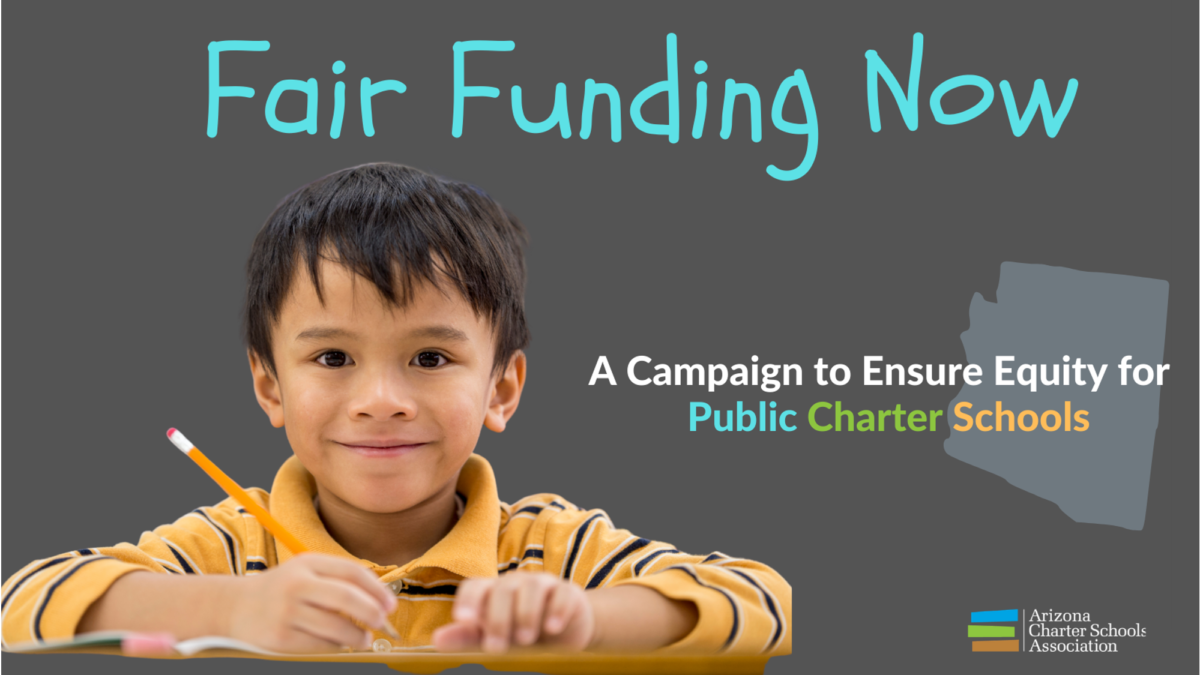Support Fair Funding for Arizona's Public Charter Schools
- Roughly 570 public charter schools currently serve more than 232,000 students in Arizona. These innovative schools play a critical role in our public education system. Along with providing more choices for families in communities all across the state for almost 30 years, public charter schools are also improving student achievement.
- 80% of public charter schools that received a letter grade in 2023 earned an “A” or “B” rating
- Public charter students of most all groups (programs, race/ethnicity) outpaced the state average in state testing results.
Sadly, in spite of these continued accomplishments, our charter schools and the students they serve are being treated unfairly. Because of an outdated school finance system, in 2023 public charters received on a statewide average $2,427 less* in per-pupil-funding than their district counterparts.
*Annual Report of the Arizona Superintendent of Public Instruction
Learn more about how Arizona's schools are funded . . .
Arizona’s Systems of School Finance
Arizona’s public school system is comprised of local school districts and independent charter schools. Families in our state can choose to enroll their children at either a public charter or district school at no cost. Both sectors are funded primarily through tax revenues – a mix of local, county (“intermediate” level in funding terms), state, and federal funds, but in different ways. Most notably, school districts raise and receive local property taxes but public charter schools do not receive these funds. To partially offset these missing local funds, public charter schools receive a larger share of state funds.
Even the most fair and equitable funding systems see some differences between local education agencies (LEAs). For example, high-need students with disabilities are funded at much higher rates in order to cover expenses for the level of support these students require. LEAs serving these students naturally have higher per pupil revenues (PPR). Additionally, Arizona’s school finance system provides for small school systems (less than 600 students) to receive extra funds to cover costs of additional administrative burden. Despite funding these differences, Arizona’s public charter schools receive on average about $1,300 less per pupil than their district counterparts. This district/charter funding gap has existed for decades – it’s time for fair funding of all Arizona’s public schools.
What’s in our analysis?
At the heart of the Fair Funding campaign are those discrepancies in per-pupil revenue (PPR) amounts for public charters and districts during the 2020 school year. PPR is simply the total revenue an LEA receives during the school year divided by a student count—in this case Average Daily Membership (ADM). Though our public charters and districts have a different mix of revenue sources (local, intermediate, state, and federal), all dollars received in the 2019-2020 school year are included in our analyses and divided by the number of pupils served. A summary and comparison of public school funding has been compiled by the Joint Legislative Budget Committee (click here to view).
Use the tool below to explore local district and charter school funding by location. The average PPR for all Arizona students is represented by the gray dashed line. We have also flagged the possible impacts of a large number of high-need special education students as well as high administrative costs due to a school’s small size. Small schools with high need students will have higher costs which translate into higher PPR.

